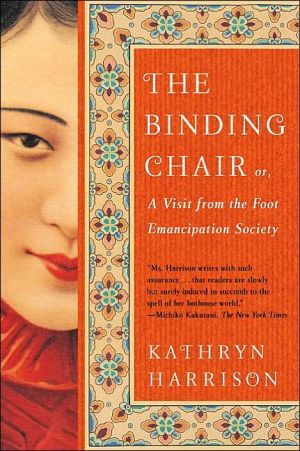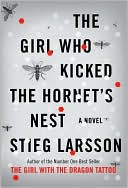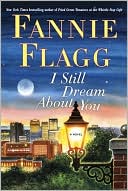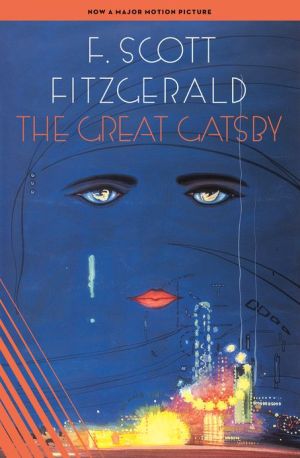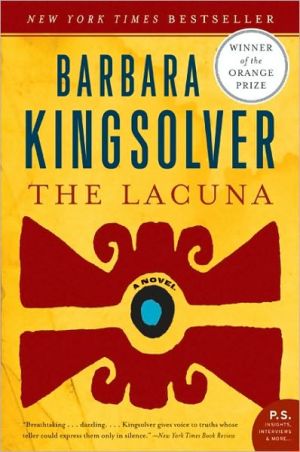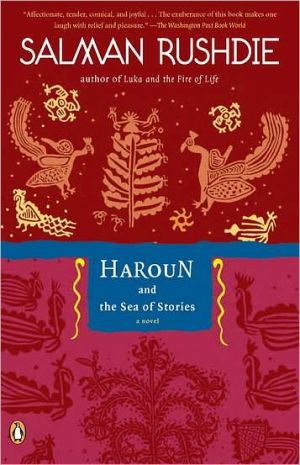Binding Chair: Or, A Visit from the Foot Emancipation Society
In poised and elegant prose, Kathryn Harrison weaves a stunning story of women, travel, and flight; of love, revenge, and fear; of the search for home and the need to escape it. Set in alluring Shanghai at the turn of the century, The Binding Chair intertwines the destinies of a Chinese woman determined to forget her past and a Western girl focused on the promises of the future.
Search in google:
In poised and elegant prose, Kathryn Harrison weaves a stunning story of women, travel, and flight; of love, revenge, and fear; of the search for home and the need to escape it. Set in alluring Shanghai at the turn of the century, The Binding Chair intertwines the destinies of a Chinese woman determined to forget her past and a Western girl focused on the promises of the future.Claire MessudA resonant, elaborately constructed novel, rich in incident, bustlingly peopled, often surprisingly funny. —New York Times Book Review
\ May and her mother had stared past the sedan chair's curtains. "I'm never going there," May said, shaking her head. "Not to that lake." Her mother didn't answer. Instead, "Hurry! Hurry!" she called out to the boys carrying the chair. They were late returning home; May's grandmother would be angry.\ \ ARMS WERE HARDER than legs. She tried holding the life preserver with one arm while stroking with the other, but in the end he had to support her while she practiced. He stood in the shallow end and held her up on the surface of the water with his broad palms. The feel of his hands against her ribs, his frown of youthful concentration, their formal yet physical intimacy-these reminded her of a time when she was as young as he, and working as a prostitute in Shanghai.\ \ "No. No. Your timing is off. You turn your face up out of the water when you lift your arm. You take a breath as you lift."\ \ WHEN SHE WAS HOME, Alice watched the lessons from the balcony outside her bedroom, her vigil silhouetted by the white curtain behind her.\ \ May didn't do things casually. She wouldn't pursue swimming for the pleasure of it. Certainly not for the exercise, never on the advice of a physician. She must have some sort of a ... a plan?\ \ Crawl, back, breast, side: Alice tracked May's progress through the strokes, her own arms folded, her dark head dipped apprehensively.\
Apprenticeship3The Czar's Clock10The Binding Chair22Construction Train29Twice Thwarted39Apparitions51The View from the Gardener's Back56The Short History of a Prodigy66A Long-Handled Spoon73Seance84A Weakness for Russian Officers91A Visit from the Foot Emancipation Society105Adventure and Arrest116A Search Undertaken124Bright, Worthless Coins128The Year of the Foot Tax139The Cure for Lisping153Discipline for Girls161Ten-in-One172Justice Served176Dolly Cleans House182Circumnavigation190Heroes of the Great War197Syntax and Symmetry210Spanish Influenza218Drink the Water226The Pipe Dreams of a Rat233The Head of the Family241Hospitality254A Facility with Language265The Sunny Coast of France270Shoes for Walking278Proposal285Promenade291Birthday Celebration300The Bay of Angels303
\ From Barnes & NobleRanging from rural China in the late 19th century to bustling Shanghai at the dawn of the 20th century to the French Riviera in the 1930s, Kathryn Harrison's new novel, The Binding Chair, tells the spellbinding story of one woman's attempt to outrun her fate while coming to terms with her own painful past. Harrison, the author of three previous novels and the controversial memoir The Kiss now shifts her focus to the life of May, an elegant and mysterious Chinese woman condemned to a life of physical suffering and longing for spiritual freedom. But The Binding Chair is also the story of many displaced people and their tales of heartbreaking loss, self-discovery, and self-invention.\ At the age of five, May is forced to have her feet bound, and the continuing agony she endures as she matures is accompanied by dreams of deliverance into a good marriage. But ultimately, her marriage to a wealthy silk merchant marks her entry into a new nightmare, in which she becomes the object of his perverse sexual tendencies and intense physical abuse. Too crippled to bear her away from the merchant's home, the same small feet that were to guarantee her an easy life now bind her to an intolerable fate. After several suicide attempts, May bribes one of the gardeners to carry her on his back to Shanghai, where she sheds her old identity to begin a new life.\ The setting for her new beginning, however, is an upstairs room in a Shanghai brothel, where she sheds her Eastern clothing for the desires of Western men, while abandoning her Eastern traditions to embrace Western literature. There she meets Arthur Cohen, an spirited young Australian living in Shanghai, who comes to May not as a customer but as a member of the Foot Emancipation Society -- a misguided group of do-gooders dedicated to ending the practice of foot binding. Arthur becomes obsessed with May, begs her to marry him, and brings her into the home he shares with his sister and her wealthy husband.\ But rather than fulfill her dream of escaping the past, life with Arthur proves to be just the beginning of May's collision with it. Longing for a child of her own -- and still searching for the illegitimate child she gave up for adoption while at the brothel -- she places all her hopes for freedom in her impetuous and fearless niece, Alice. Still, May is haunted by her own dark past, and the only escape she finds is in clouds of opium.\ All the women of The Binding Chair are running from something, or toward it. Throughout the novel, women struggle to sever the ties to roles or personas to which their traditions and societies would bind them. In addition to May's attempt to ease the chronic pain in her feet, Harrison pulls no punches in illustrating the suffering of all her female characters; for each, "binding" is inextricably associated with brutal, physical pain. Eleanor Clusbertson, a brilliant mathematician relegated to a dreary life of teaching in a girl's school, endures the unnecessary extraction of a front tooth in the vain hope of correcting a lifelong lisp and reshaping who she is perceived to be. Everywhere these women turn, the harsh consequences for living outside the boundaries of tradition are grimly depicted, as in one scene where an adulterous woman is publicly mutilated.\ But this viciousness -- at time brutal, at times breathtaking -- is balanced with an eroticism wrought with rich, sensual language and imagery. Harrison dazzles in her ability to reveal her characters most fully when undressed. Whether using sex to prove freedom, or enduring the brutalities of an unforgiving sexual hierarchy -- or even, at times, when her characters find love (and they do) -- their longings and conflicts are coaxed to the surface in the dingy, dimly lit bedrooms of lovers, or on the tearstained silken sheets of a Riviera mansion.\ The characters of The Binding Chair are coping with loss -- lost sons, daughters, hopes, loves -- but they are also searching for lost parts of themselves. And ultimately, whether suffering wounds to the heart or scars on the body, they all seek escape, relief, and if possible, rebirth. In The Binding Chair, Kathryn Harrison binds their tales together beautifully, weaving a novel that is at once enormously sensitive, heartbreakingly tragic, and surprisingly hopeful.\ —Elise Vogel\ \ \ \ \ \ Claire MessudA resonant, elaborately constructed novel, rich in incident, bustlingly peopled, often surprisingly funny. —New York Times Book Review\ \ \ Laura Morgan Green...an entertaining novel. Harrison writes graceful and richly descriptive prose...\ — Salon\ \ \ \ \ Gadi TaubAfter three successful novels and a controversial memoir of her sexual relationship with her father...1997's The Kiss....Kathryn Harrison steps outside the realm of ultimate transgressions and total devastation with this deeply humane novel. \ — \ Wall Street Journal\ \ \ \ \ Scott TobiasThree novels into her roundly venerated career, Kathryn Harrison sparked an uproar with her controversial 1997 memoir, The Kiss, which centered on the four-year affair she had with her long-absent father after meeting him as a young adult. In her previous work, Harrison had never shied away from issues of incest and abuse, but removed from the comforting safeguard of fiction, her confessional suddenly amounted to gross exploitation. To her credit, Harrison's compelling and intricately structured follow-up, The Binding Chair, remains unaffected by the critical firestorm, boldly delving into the same treacherous eroticism on which she's staked her reputation. As with The Kiss, she's primarily concerned with how childhood trauma can pervade and even define a person's life throughout adulthood. Spanning four decades, from the turn-of-the-century brothels of Shanghai to the south of France between the world wars, The Binding Chair follows the tumultuous affairs of two women who attempt to abandon their designated place in society. It's hard to imagine a more potent metaphor for female oppression than Chinese foot-binding, a crippling procedure which essentially involves breaking the foot in order to shape it into an unnaturally petite, doll-like miniature. Bound as a little girl, May's choices are as limited as her mobility. Sent off to an arranged marriage with a bigamist husband in rural China, she plots an ill-fated escape that lands her in a Shanghai brothel, where she becomes addicted to opium. She's rescued by a well-heeled Australian gentleman from the Foot Emancipation Society who, ironically, becomes so perversely enraptured with her feet that he winds up marrying her. Back at his brother-in-law's estate, May meets a kindred spirit in her niece, Alice, a precocious teenager who herself embarks on a series of unhealthy sexual relationships. Harrison alternates chapters between May and Alice in their coming-of-age years, effortlessly paralleling their adversities in two different periods until their damaged lives converge for good in the second half. The Binding Chair is occasionally undone by Harrison's taste for sensationalism, but her connection with the subject matter and her assured, seductively limpid prose are hard to resist. \ — Onion AV Club\ \ \ \ \ Publishers Weekly\ - Publisher's Weekly\ As she demonstrated in Poison, Harrison renders historical settings with textured fidelity. Here she spins an exotic and irresistible tale set mainly in Shanghai at the turn of the last century, with evocative side trips through Russia, England and the French Riviera. The changing culture of China is reflected in the life of a compelling character. Born in 1884, May must submit to foot binding as a child, and thereafter endures constant pain and the constriction of her freedom. Despite her deformed feet, at 14 she escapes a sadistic husband and pursues a new life in a brothel in Shanghai, where she eventually marries a kindhearted Jewish immigrant from Australia who's a member of the Foot Emancipation Society. May's stubborn, indomitable spirit isn't hampered by her husband's inability to find a job, since they live in the opulent household of his sister and her husband, and their two daughters--the younger of whom comes under May's thrall. Manipulative and autocratic, May spends her life despising her useless feet, fighting convention and adoring her high-spirited niece. But she cannot escape the ancient legends and superstitions that shadow her life, or the opium habit she develops after several emotional blows. Lost children are one theme here, and the varied ways people deal with such loss. Another is the lot of women striving to be independent in a hostile world. Harrison describes in harrowing detail the barbaric foot-binding ritual, various forms of sexual brutality, parental abuse and official torture. She is equally deft at social comedy, erotic titillation and tender sentiment. This is her best work to date, an intricately and elegantly constructed narrative about intersections of character and fate, history and chance, and the ironic, tragic fulfillment of hearts' desires. 12-city author tour. (May) Copyright 2000 Cahners Business Information.\|\ \ \ \ \ Library JournalA turn-of-the-century tale of a Chinese girl who flees from foot binding to brothel to marriage with a Westerner. Copyright 2000 Cahners Business Information.\ \ \ \ \ New York ObserverKathryn Harrison’s previous novels have already established her as an exceptionally, almost ridiculously gifted writer, whose cool, well-crafted sentences conceal their emotional message until some small detail–a sigh, a ripple of water–tips the author’s hand. In The Binding Chair, she has managed to resurrect the illicit–a remarkable achievement in the Age of Consent–and to mark again her thundering talent and her twisted sensibilities.\ \ \ \ \ VogelMay 2000\ Ranging from rural China in the late 19th century to bustling Shanghai at the dawn of the 20th century to the French Riviera in the 1930s, Kathryn Harrison's new novel, The Binding Chair, tells the spellbinding story of one woman's attempt to outrun her fate while coming to terms with her own painful past. Harrison, the author of three previous novels and the controversial memoir The Kiss, now shifts her focus to the life of May, an elegant and mysterious Chinese woman condemned to a life of physical suffering and longing for spiritual freedom. But The Binding Chair is also the story of many displaced people and their tales of heartbreaking loss, self-discovery, and self-invention.\ At the age of five, May is forced to have her feet bound, and the continuing agony she endures as she matures is accompanied by dreams of deliverance into a good marriage. But ultimately, her marriage to a wealthy silk merchant marks her entry into a new nightmare, in which she becomes the object of his perverse sexual tendencies and intense physical abuse. Too crippled to bear her away from the merchant's home, the same small feet that were to guarantee her an easy life now bind her to an intolerable fate. After several suicide attempts, May bribes one of the gardeners to carry her on his back to Shanghai, where she sheds her old identity to begin a new life.\ The setting for her new beginning, however, is an upstairs room in a Shanghai brothel, where she sheds her Eastern clothing for the desires of Western men, while abandoning her Eastern traditions to embrace Western literature. There she meets Arthur Cohen, an spirited young Australian living in Shanghai, who comes to May not as a customer but as a member of the Foot Emancipation Society -- a misguided group of do-gooders dedicated to ending the practice of foot binding. Arthur becomes obsessed with May, begs her to marry him, and brings her into the home he shares with his sister and her wealthy husband.\ But rather than fulfill her dream of escaping the past, life with Arthur proves to be just the beginning of May's collision with it. Longing for a child of her own -- and still searching for the illegitimate child she gave up for adoption while at the brothel -- she places all her hopes for freedom in her impetuous and fearless niece, Alice. Still, May is haunted by her own dark past, and the only escape she finds is in clouds of opium.\ All the women of The Binding Chair are running from something, or toward it. Throughout the novel, women struggle to sever the ties to roles or personas to which their traditions and societies would bind them. In addition to May's attempt to ease the chronic pain in her feet, Harrison pulls no punches in illustrating the suffering of all her female characters; for each, "binding" is inextricably associated with brutal, physical pain. Eleanor Clusbertson, a brilliant mathematician relegated to a dreary life of teaching in a girls' school, endures the unnecessary extraction of a front tooth in the vain hope of correcting a lifelong lisp and reshaping who she is perceived to be. Everywhere these women turn, the harsh consequences for living outside the boundaries of tradition are grimly depicted, as in one scene where an adulterous woman is publicly mutilated.\ But this viciousness -- at times brutal, at times breathtaking -- is balanced with an eroticism wrought with rich, sensual language and imagery. Harrison dazzles in her ability to reveal her characters most fully when undressed. Whether using sex to prove freedom, or enduring the brutalities of an unforgiving sexual hierarchy -- or even, at times, when her characters find love (and they do) -- their longings and conflicts are coaxed to the surface in the dingy, dimly lit bedrooms of lovers, or on the tearstained silken sheets of a Riviera mansion.\ The characters of The Binding Chair are coping with loss -- lost sons, daughters, hopes, loves -- but they are also searching for lost parts of themselves. And ultimately, whether suffering wounds to the heart or scars on the body, they all seek escape, relief, and if possible, rebirth. In The Binding Chair, Kathryn Harrison binds their tales together beautifully, weaving a novel that is at once enormously sensitive, heartbreakingly tragic, and surprisingly hopeful.\ Elise Vogel is a freelance writer living in New York City.\ \ \
